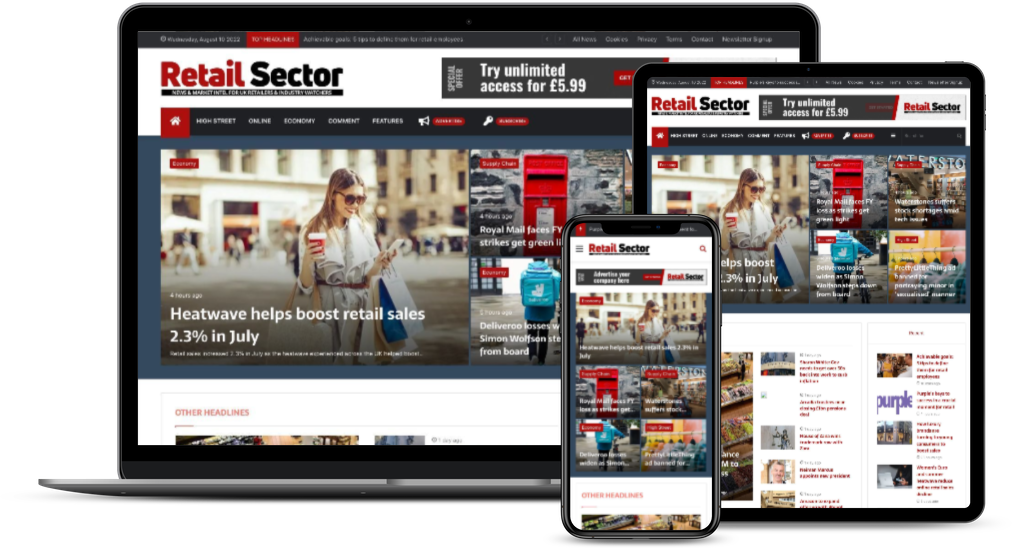Clare Burrows: establishing a pioneering footwear brand from scratch
Clare Burrows, founder of Air & Grace, has spent nearly three decades in the footwear industry, building a brand that seamlessly combines style and comfort. Her journey from answering a newspaper job advert to launching a thriving direct-to-consumer business is a testament to passion, perseverance, and a deep understanding of the retail landscape. In this feature, Burrows shares her career story, the challenges of building a brand from the ground up, and why slow fashion is the future of footwear.
Falling into Footwear
Burrows never intended to build a career in footwear. Having studied at the London College of Fashion, her initial goal was to work in fashion more broadly. But an advert in The Evening Standard for a junior buying role at Office Shoes changed everything. “They interviewed about 50 people, and I somehow managed to get the job,” she recalls. “That was it—I was hooked.”
The fast-paced nature of the footwear business excited her. She quickly climbed the ranks at Office before moving to Oasis, where she secured her first buying position. Over the years, she gained experience at brands like Kurt Geiger and Aldo, shifting from buying into product design. “At Kurt Geiger, we didn’t have a design team, so I was essentially designing and buying the product at the same time,” she explains. That hands-on experience ignited her passion for product creation.
Moving Away from Fast Fashion
Burrows’ time in the high street fashion sector taught her invaluable lessons, but it also made her realise what she didn’t want. “I wasn’t interested in fast fashion fads,” she says. “I was drawn to products with longevity, quality, and purpose.”
Her experience at FitFlop solidified this shift in thinking. The brand’s focus on comfort and performance-driven footwear resonated with her. “I started questioning a lot about the industry,” she explains. She wanted to create shoes that not only looked good but also felt incredible to wear.
This realisation eventually led her to leave the corporate world and start something of her own. “I wanted to create a brand that put equal emphasis on style and comfort. Shoes you actually want to wear all day,” she says.
The Birth of Air & Grace
Launching Air & Grace wasn’t an overnight decision. “I played around with the idea for a while,” Burrows admits. “I didn’t know whether I had the confidence to do it.” The early days were about finding the right people to help bring her vision to life. “There were some brilliant people I’d worked with over the years who I called on for help,” she says.
One of those key figures was a footwear technologist who helped develop Air & Grace’s patented Tender Loving Air insole. “That’s what gives our shoes their amazing underfoot comfort,” Burrows explains. But before she could bring the product to market, she had to secure manufacturing partners—a significant challenge in itself.
The Challenges of Building a Brand
Finding a manufacturer that believed in her vision wasn’t easy. “At the time, online-only brands weren’t taken seriously,” she says. Many factories were hesitant to work with a business that wasn’t planning to open physical stores. “They wanted large orders, and small batch production wasn’t something they were interested in,” she explains.
Burrows had to pitch relentlessly to suppliers, often facing long delays. “Some manufacturers would agree to make samples but then disappear for ten weeks,” she recalls. Eventually, she secured a partnership with a Portuguese factory that shared her commitment to quality. “We started with an order of 400 pairs. Now, we’re their fifth-largest customer,” she says proudly.
Raising Investment in an Unconventional Way
With manufacturing challenges sorted, the next hurdle was financing. “I’d spent my life savings, maxed out every line of credit, and all I had to show for it was a set of samples,” she says. With no budget left for marketing, she needed investment—but securing it wasn’t straightforward.
One night in the pub, Burrows stumbled across an article in Metro about a competition called Brands of Tomorrow. “The deadline was midnight, and I thought, ‘Why not give it a shot?’” she says. She applied, got shortlisted, and eventually won the competition, securing £150,000 through Seedrs crowdfunding. “That allowed me to put the shoes into production, build a website, and start marketing,” she says.
Her success attracted the attention of investor Michael Acton Smith, co-founder of Calm, who also decided to back the brand. “It was surreal,” Burrows admits. “One moment, I had nothing. The next, I had the funds to make it happen.”
Early Setbacks and Resilience
Despite the funding, launching Air & Grace wasn’t smooth sailing. The first production run was manufactured incorrectly and had to be scrapped. “That was a tough moment,” Burrows recalls. “I’d just taken on investment, and now I had nothing to sell.”
She had to be upfront with investors, explaining the situation and the need to delay the launch. “Honesty was the only approach,” she says. “Luckily, they were supportive. Michael in particular shared stories of his own setbacks, which helped put things into perspective.”
It took a full year from securing investment to actually selling shoes. But once the brand launched, it quickly gained traction, thanks to a combination of direct customer engagement and social media. “We built a community on Instagram before we even launched,” she says. “That gave us a ready-made customer base.”
Slow Fashion and Long-Term Thinking
Unlike many footwear brands that focus on trends, Air & Grace champions slow fashion. “We take our time designing shoes because we want them to stay in the collection for years,” Burrows explains. Each style undergoes extensive wear trials, prototyping, and fit testing before it’s released. “That approach frustrates some of our factories, but they now see that we mean it,” she adds.
This commitment to longevity extends to the brand’s production process. “We make small batches to minimise waste. If a style sells out quickly, we do another run—but we never overproduce,” Burrows says.
Cultivating Customer Loyalty
One of Air & Grace’s strengths is its strong customer relationship. “From day one, we engaged directly with our customers,” Burrows says. The brand regularly seeks input from its audience, whether through Instagram polls or email surveys. “Our customers help shape our collections,” she explains.
In the early days, Burrows attended consumer events to introduce people to the brand. “Even though we’re an online business, meeting customers in real life was crucial,” she says. That direct connection built trust and loyalty—something that continues to set the brand apart.
The Moment It Felt Real
Burrows admits there was never a single moment when she felt Air & Grace had ‘made it.’ But a significant milestone was the brand’s first profitable year. “My accountant had spent years asking if I was sure I wanted to continue,” she laughs. “The first time we made a profit, it was a real turning point.”



